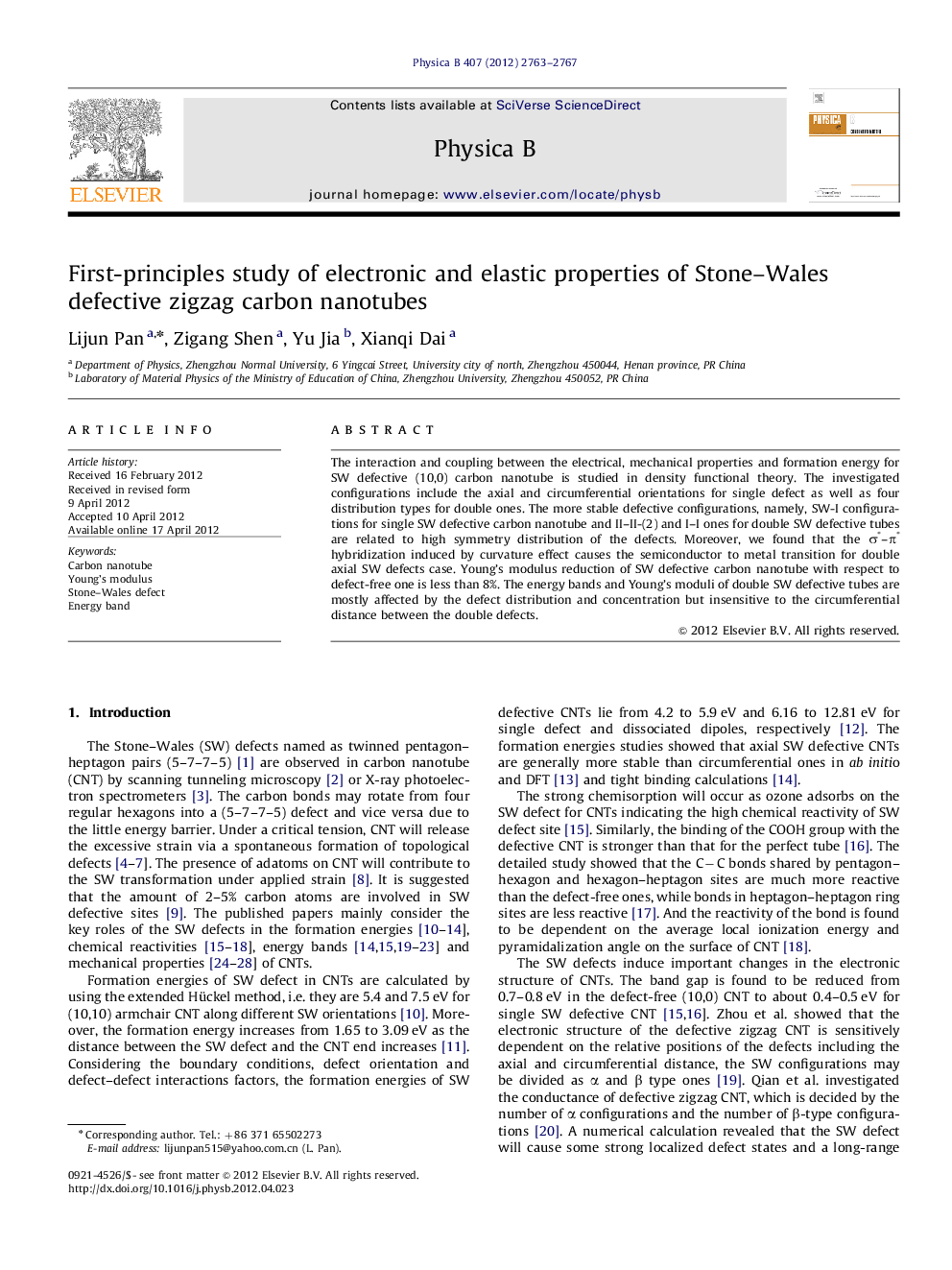| Article ID | Journal | Published Year | Pages | File Type |
|---|---|---|---|---|
| 10714081 | Physica B: Condensed Matter | 2012 | 5 Pages |
Abstract
The interaction and coupling between the electrical, mechanical properties and formation energy for SW defective (10,0) carbon nanotube is studied in density functional theory. The investigated configurations include the axial and circumferential orientations for single defect as well as four distribution types for double ones. The more stable defective configurations, namely, SW-I configurations for single SW defective carbon nanotube and II-II-(2) and I-I ones for double SW defective tubes are related to high symmetry distribution of the defects. Moreover, we found that the Ïâ-Ï* hybridization induced by curvature effect causes the semiconductor to metal transition for double axial SW defects case. Young's modulus reduction of SW defective carbon nanotube with respect to defect-free one is less than 8%. The energy bands and Young's moduli of double SW defective tubes are mostly affected by the defect distribution and concentration but insensitive to the circumferential distance between the double defects.
Related Topics
Physical Sciences and Engineering
Physics and Astronomy
Condensed Matter Physics
Authors
Lijun Pan, Zigang Shen, Yu Jia, Xianqi Dai,
